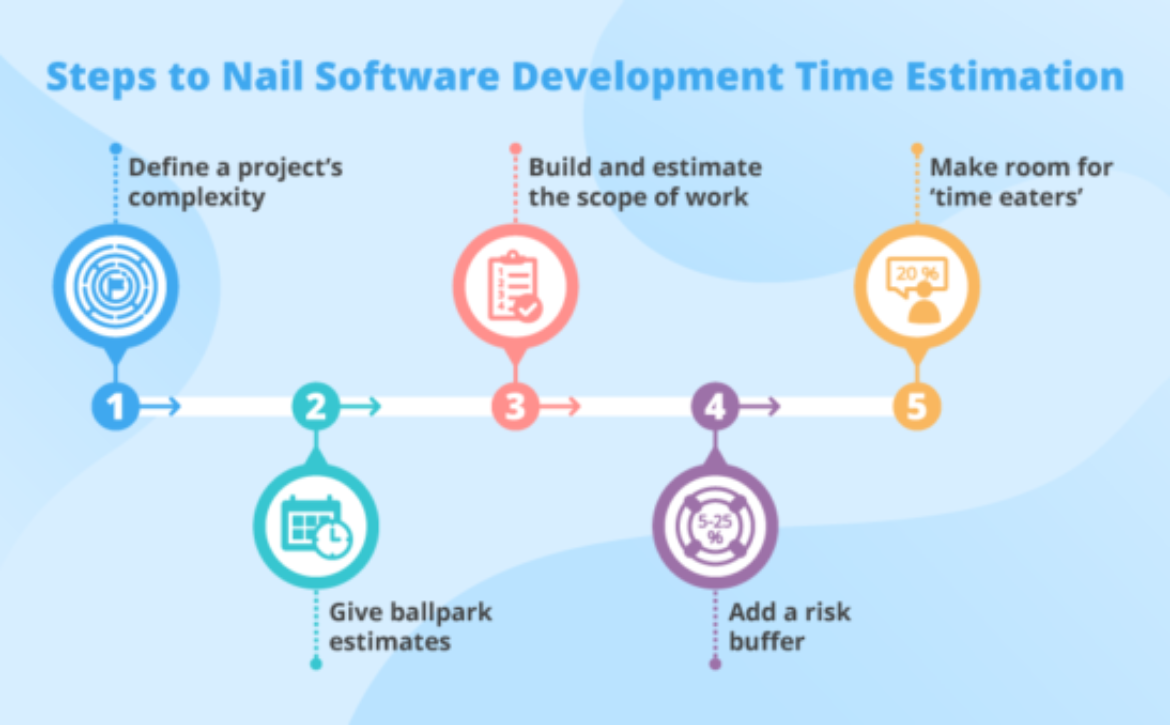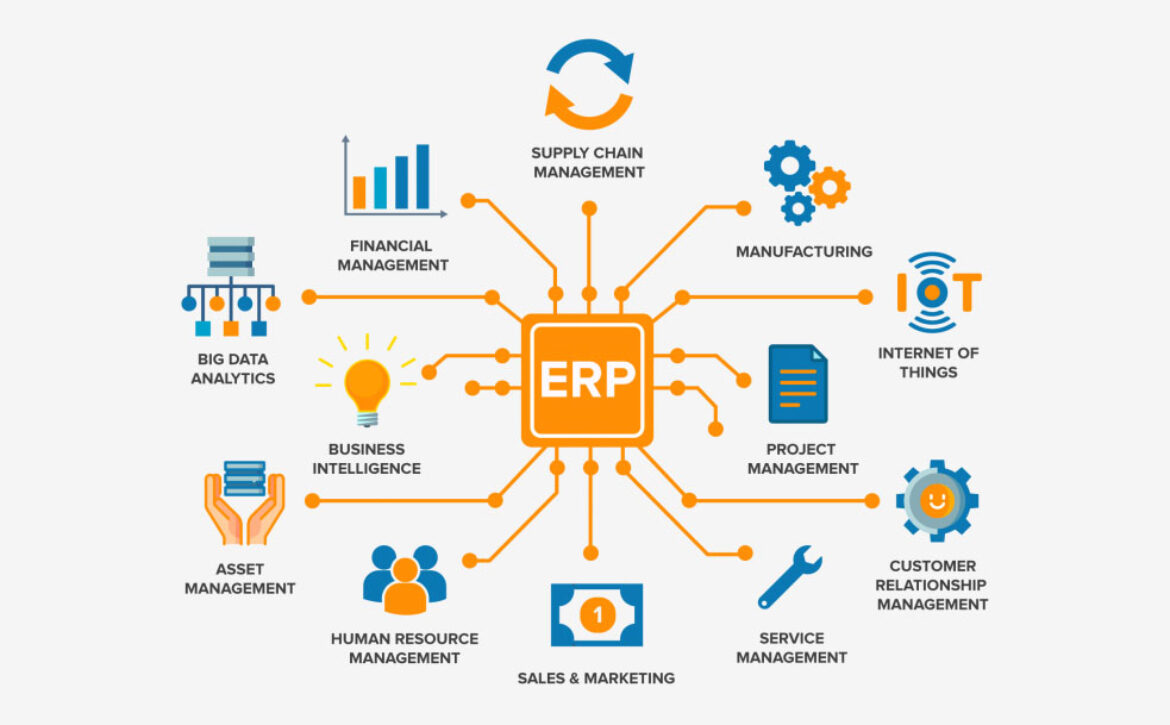What is the estimated timeframe for the development of your software solution?
You must have posed this query at least once to your development partner. Knowing how much time and money it will take to construct your custom solution is crucial for you.
The fundamental heart of the development process in project management is precise cost estimation. Everyone is aware of how crucial it is to give clients accurate assessments. Clients and development teams would both agree that this method has many advantages.
So continue reading if you’re still unsure of how long it will take to construct your software solution. In the paragraphs that follow, we’ll go over some key project estimation components as well as our own internal process that has been hand-selected by the top members of our team.
1. An Estimates Battle Between Agile And Traditional
Software developers used to operate in a more conventional manner. The procedure began with the project manager creating a project plan that included all the tasks, dependencies, and teammates that were allocated. However, the technique to software project estimation changed completely with the introduction of the Agile development manifesto.
Early project planning techniques limited the project’s scope while allowing for some flexibility in its development time and expense. Naturally, this led to an inaccurate time and cost estimate for the project. And because of this, agile project estimating approaches adopt a different strategy. It limits the development’s time and expense to a specific range while allowing for flexibility in the project’s scope.
The agile method starts with high-level scoping instead of with a “Complete” notion of the project. By doing so, we can gain more knowledge about the project, get our questions answered, and comprehend its essential features and functionalities. This knowledge also enables us to allocate the appropriate tech stack and experts and simplify the development process.
The new approach increases the possibility of success by leaving behind the rigid and continuous traditional estimation process. Our agile methodologies for project time and cost estimation make sure that the assessment is based on a thorough understanding of the project, not just generalizations. Additionally, this enables the project’s scope to alter and adapt to the shifting business requirements, supporting our clients’ future growth.
2. Software Development Project Estimation:
A Benefits Game!
Starting the development process with a clear understanding of how much to invest is advantageous for both us and the clients. It provides a strong foundation of information that enables us to evaluate the level of expertise and effort required for the product development process to be successful.
Let’s look at the list of benefits below to see how accurate cost prediction in project management benefits both clients and developers:
A. It Builds Trust
Any form of connection needs trust, but a business one especially so.
Consider working with a partner in Web Development who refuses to give you a project’s budget and cost estimate in writing. They entirely exclude any information about how long it might take to construct the solution, leaving you in the dark.
It sounds terrible, doesn’t it? Imagine being completely ignorant of a crucial construction project that would alter how a company is conducted. Such a situation does not foster any greater faith in the development organization. On the other side, a thorough understanding of the project estimation will undoubtedly boost client and developer confidence. And because of this, skilled web development companies usually make sure that an appropriate assessment procedure is a crucial part of the development project.
B. Improves the Project's Value
Any software’s worth is evaluated by ROI, or return on investment. What percentage of your investment in the development will you get back? Furthermore, a wrong response will significantly reduce the project’s worth.
A successful development project also leads to greater training and a higher reputation in the field. Because of this, accurate project estimation benefits both clients and development firms. It offers genuine value and ROI for one side. For the opposing party, it provides significant experience, knowledge, and a strengthened relationship with the clients.
C. Define and adhere to reasonable deadlines
Imagine starting a marketing campaign for your newest piece of software that communicates with customers only to learn that development would take longer. You will need to change a lot of your previous decisions, and this will affect how the market perceives you.
Development teams can grasp the project’s scope and then establish a reasonable deadline with the aid of a legal agile project estimation process. After performing a preliminary analysis of the proposal, we start by defining the features, functionalities, user stories, and tech stack before estimating a possible schedule. Such a timetable is reasonable and considerably simpler to accomplish.
D. Promotes a Quicker Outcome
It is a well-known fact that effective cost estimation methods for IT projects speed up development. The project requirements are prioritized and broken down for the design of the sprint plan using the agile methodology.
A thorough sprint strategy makes it easier for the designers to develop a valuable product. They can concentrate on the crucial aspects of development initially and make sure that they are flawless for the clientele. In this manner, we can produce a successful product much more quickly.
E. Assisting customers in making wiser business decisions
Consider going food shopping with a set spending limit for each item on your list. When you arrive, you discover that the cost of one crucial item on the list has gone up. You now need to take out one of the other grocery items on the list to make room for that. Since we are merely discussing groceries, this is a simple task. But when it comes to your business, such choices are rarely simple.
3. A Simple Project Cost Estimate
It will be easier for you to make strategic business decisions if you are aware of the project’s schedule and cost estimates. Knowing how much to invest and what to anticipate in terms of return on investment is the key to success, whether you are a start-up business owner or an experienced businessman entering the tech industry. So how do you calculate project time and cost? Here is a short rundown of Young Techies own unique process for you.
A. Starting With A Simple Estimate
Without a thorough understanding of the project, any time and cost estimates supplied for project management are useless. Before working with us, however, the clients require a simple model. And because of this, the first step in our estimation process is to critically evaluate the initial proposal.
Our sales team talks with the development specialist based on the client’s initial requirements and gives them a basic time and cost estimate. This estimate is almost always close to the amount of time needed to build the solution. It is, however, still merely a preliminary estimate based on the project’s outline. This figure will undergo various revisions as we move forward.
B. Planning & Discovery: Stabilizing The Estimation Base
After the kick-off process is complete and the client is on board, we start our discovery and planning phase. In this step, we also validate all previous project cost, time, and effort estimates.
The pre-kick-off process’ high-level scope already includes an evaluation of the basic estimate the sales team submitted. It is founded on the deliverables chosen in conjunction with the client and the team. The next step is a more thorough estimation phase, during which we post specifics about the deliverables on the discussion board. Our project managers then calculate the amount of time and work required for development.
An explanation of the estimation procedure during the discovery and planning stages is provided below.
I. Being aware of the primary goal
Before diving into the methodology in detail, this step is meant to ensure that you have a solid understanding of the project. Furthermore, it helps us to finish the exhaustive E1 estimation, which is a more accurate version of the preliminary software project estimation plan.
We hope to accomplish all of the deliverables during this process, as well as validate the data we have so far and address any new issues and doubts. We proceed to the following step, epic mapping, after the high-level deliverables have been made clear.
II. Epic Mapping and User Stories
User stories and epic mapping are crucial components of our E1 estimating technique. We can divide the epic, a more substantial component, into smaller user stories. On the other hand, user stories are informal descriptions of various features written from the perspective of the users.
Epics, which are higher-level capabilities, include a number of smaller user stories. The user goals in the figure below, for instance, each stand in for an epic. The users would have to carry out the user behaviors outlined in order to accomplish these aims. However, as seen in the figure, every individual would carry out the same exercise differently.
The epic mapping simply divides the deliverables into more manageable pieces so that the team can understand what parts are required to construct the solution. The project manager starts the E1 estimation of the effort/size of the process once it has been agreed upon by the client and all internal team members. The tech stack is used to determine this estimate. The hours and story points chosen during this phase are in accordance with the industry norms and the baseline for the company. The E1 estimate’s hour range also accounts for buffer time, which is crucial for successfully finishing the project on schedule.
The project manager examines the effort and cost estimation after the E1 phase is complete before sending it to the other members of the management team. It is noted and assessed if there are any differences between the initial estimate and the E1 estimates.
C. Using E2 Estimation to Improve Accuracy
During the pre-development & planning stage, we review the estimate once more in order to be precise when estimating project management.
Any adjustments made to the time and effort predicted in the earlier estimates are reflected in the E2 estimation. Our team strives to finish a few fundamental tasks during the pre-development phase.
The precise range of development hours is determined using the established and completed story point and team productivity. Then, the designated developers and TLs confirm this finalized software development project cost estimate. The project release plan is delivered to the clients after internal team approval.
The project release plan contains important details about the timing and cost of each spring’s release. With little to no variance, we maintain this estimate throughout the development.
4. Finally, a Few Best Practices to Remember
Being extremely organized during the project development and estimation phase is not always achievable. Project scopes change along with corporate requirements, market conditions, industry trends, and customer preferences. The development company you work with must adhere to a recognised set of project management estimating best practises in the midst of all this turbulence. You’re curious as to what they are. So here is a list:
A. Clarity/Honesty Regarding The Figures
When it comes to project estimation, transparency and clarity are crucial. How else can we win our clients’ trust?
Our estimates are based on actual project expertise and a thorough understanding of all needs, including the required tech stack, third-party components, and internal resources. We assist our clients for future growth and develop a more enduring relationship with them by giving them an honest estimate.
B. Making Specific Assumptions
While the development teams in the movies might be able to produce an impossibly large number of deliverables in a short period of time, this is not the case for developers in the real world. In practical situations, customer preferences and market conditions can change, which can slow down or obstruct the development process.
Setting clear assumptions is the second best practice for cost estimating that we adhere to. We never overestimate or undervalue the scope of a project. We give clients a clear image of what the development process would be like by looking at a proposal from a practical standpoint. This gives them a precise understanding of the investment sum and the expected ROI.
C. Think About All The Risks
It is folly to start a project without properly analyzing all the hazards. Our estimation process for software projects involves in-depth risk analysis and management planning. This plan guarantees that, should any difficulties arise, we will be able to address them before they have a detrimental effect on the project or our clients.
Despite the difficulties with estimation, we constantly strive to rise to the occasion!
It is difficult to establish a project estimate that is 100 percent accurate due to the numerous variables. However, with a comprehensive understanding of the project and the aid of our ten years of experience, we are able to appraise the projects adequately and offer insightful information regarding the amount the clients would need to pay.
Are you aware of the amount YOU need to put into your project? Why not acknowledge us? We can give you an idea of what your website construction should actually cost!







